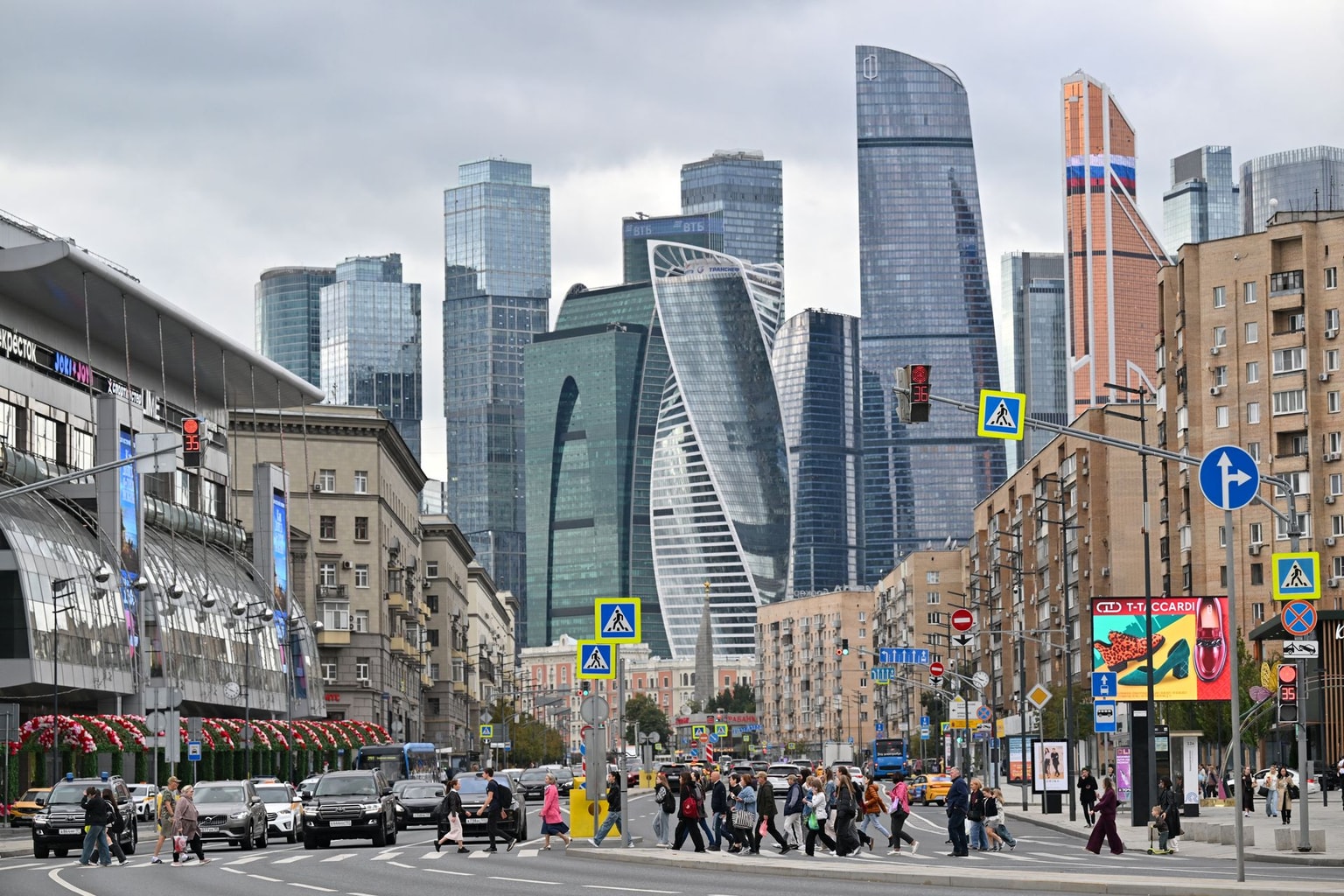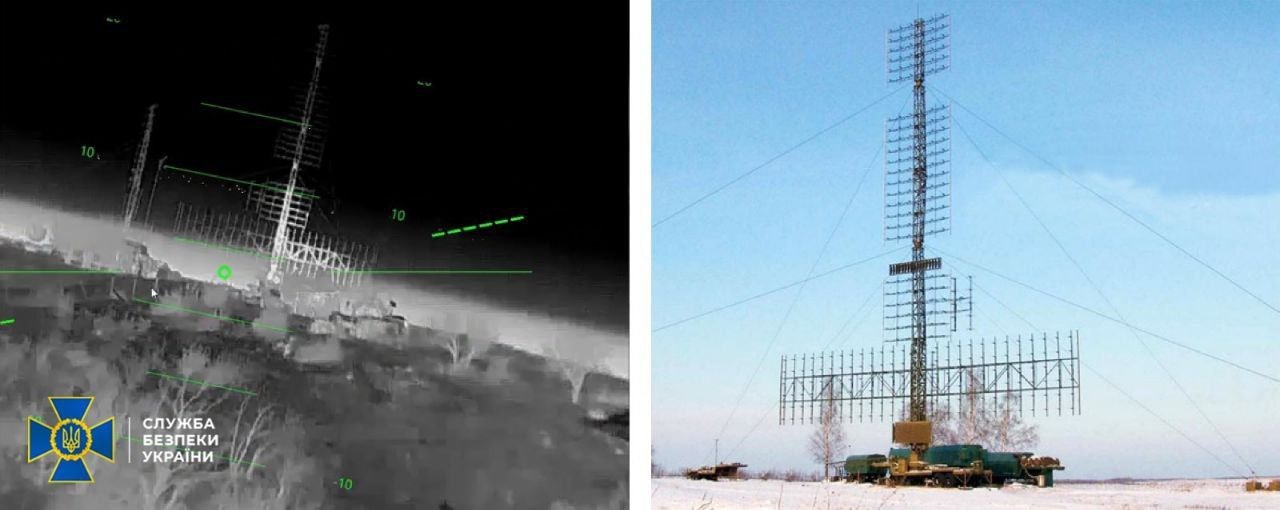Ukraine Business Roundup — Russia takes aim at the energy grid, again

The following is the Nov. 20, 2024 edition of our Ukraine Business Roundup weekly newsletter. To get the biggest news in business and tech from Ukraine directly in your inbox, subscribe here.
After weeks spent in anticipation of Russia’s next mass attack on Ukraine, Moscow launched its latest, and one of the largest, missile and drone attacks on the country overnight on Nov. 17.
The attack was the tenth far-reaching attack on the country’s energy system since March and the latest since a similar barrage in late August. Ukraine said it shot down 102 missiles out of a total 120 launched, and 42 drones out of the 90 sent to hit Ukraine this time around. Dozens of civilians were killed and injured.
What was hit: Russia targeted "power generation and transmission facilities throughout Ukraine," Energy Minister Herman Halushchenko said.
The strikes reportedly hit substations connecting nuclear power plants to the energy grid, as well as substations used for electricity imports and exports, and thermal and hydroelectric plants.
While Ukraine’s three operational nuclear power plants weren’t hit directly, several substations they depend on were damaged. The main power lines from four substations were disconnected, while six out of the country’s nine operational nuclear reactors decreased output, the International Atomic Energy Agency said.
The three nuclear plants remaining under government control provide around 60% of the country’s power — likely why Russia has its sights on them. Moscow is unlikely to target the plants directly, but can do serious damage to the infrastructure that connects them to the grid.
Russia also struck a railway depot in Dnipropetrovsk Oblast, killing two railway workers and injuring three, Ukrainian Railways, Ukrzaliznytsia, said.
After the attacks, blackouts were reported across several oblasts. Ukrenergo said it was bringing back temporary power rationing across the country and over the last few days, many people in Kyiv have been without power for several hours throughout the day. The Kyiv Independent’s office lost power on Monday and Tuesday for a couple hours at a time, and the whole block is once again filled with the sound of generators.
DTEK, Ukraine’s largest private energy company said that its thermal power plants came under attack, “heavily damaging” energy equipment, without providing further details.
After Russia knocked out half of Ukraine’s generating capacity in attacks this year, fears abound this latest attack could be just the first in a series at the start of what officials say could be the worst winter since the start of the full-scale invasion.
The attack could also be a sign of the state of affairs between Kyiv and Moscow as President-elect Trump prepares to force the two to the negotiating table. Back in August, the Washington Post reported that Russia was preparing to enter secret indirect talks with Ukraine to mutually stop attacks on energy infrastructure. If there were any talks to stop the strikes, they clearly fell through.

Decarbonizing the steel industry with nuclear
As Russia launched its latest mass attack on Ukraine’s energy grid overnight on Nov. 18, more than 200 countries were gathering in Baku, Azerbaijan for the UN’s annual global climate conference, or COP29.
The countries were mainly focused this year on difficult negotiations over how to transition away from fossil fuels and raise more money to help developing countries fight climate change.
On the sidelines of those heated debates, Ukraine and the U.S. announced the two sides would partner to transition Ukraine's coal-fired plants to small modular nuclear reactors, largely to help decarbonize its steel industry.
Small modular reactors (SMR) are an emerging technology that allow for reactors to be transported and assembled on-site.
"The partnership will build a roadmap and provide technical support to "rebuild, modernize, and decarbonize Ukraine's steel industry with SMRs," the State Department said.
Another project announced at COP29 will build a pilot plant in Ukraine to demonstrate the production of clean hydrogen and ammonia using simulated SMR technology.

Turning Ukraine into a tagline
Given the unprecedented use of drones in Ukraine and the novelty of the industry globally, U.S. manufacturers have been keen to headline their work at the Ukrainian front line, Kollen Post writes in his latest for the Kyiv Independent.
“You cannot field an American drone system today that doesn't have the moniker of ‘battle-tested in Ukraine’ on it,” James Acuna, a 20-year CIA operations officer and former naval architect, currently consulting on drones from Estonia, told the Kyiv Independent.
A combination of Silicon Valley PR machines and military secrecy makes total impact tough to gauge, but reports indicate that Western drones have not been particularly helpful to Ukraine, proving weak in the face of Russian electronic warfare.
That has not stopped U.S. drone makers from constantly advertising product impact and C-suite man-hours logged in Ukraine as a pitch to better-heeled Western militaries, especially the U.S.
“Because you don't have success in Ukraine, you need to start embellishing, speaking half-truths. And it doesn’t matter, because nobody can fact-check,” Acuna says.
Read the full article here.

US entrepreneur takes to small-town Ukraine
When Chicagoan Chris Exline decided to expand his furniture rental company to Ukraine, he did not expect to relocate his life to a small town of 20,000 people in Ternopil Oblast.
Exline originally came to Ukraine in 2023 to get into reconstruction, but as it became clear rebuilding was far off, he opened a home goods store in the small western town of Kramanets, offering the option to pay on layaway — a depression-era invention and still today, a rarity outside of the U.S.
The Kyiv Independent’s business reporter Dominic Culverwell sat down with Exline on the sidelines of the Mayor's Summit in Kyiv on Nov. 8 to talk about opening and running a business in small-town Ukraine when almost no one else is.
Kyiv Independent: Why did you choose to open your business in Ukraine?
Chris Exline: We (originally) teamed up with a mattress factory in Kremenets, Ternopil Oblast, and were going to buy it but that fell through. I struck a deal with the owner to buy mattresses every month but we didn't really have an outlet to sell them in Kremenets, which is a town of 20,000 people.
We started mattress donations and from that period I realized why I should be in Kremenets. The multiplier effect of what we did here would be much greater than if we were in Lviv, Ternopil, or Kyiv.
By February 2023, it was obvious that the pace and scale of reconstruction weren't going to be as anticipated. I had to do something so I opened a Home Essentials store on May 1, 2023 — the first home decor shop in Kremenets.
Kyiv Independent: How do you assess the business environment in Ukraine for foreign investors?
Chris Exline: I think the opportunities for foreign investors are enormous and our (furniture rental) market is going to be very big. I would find it extremely hard to justify being here if the market was only in the tens of millions.
Kyiv Independent: Do foreign investors need to reassess their understanding of business in Ukraine?
Chris Exline: There are a lot of small companies in Europe that want to come in, but they don't have the financial resources. There's also a huge disconnect. Companies don't know how to come in because there's no clarity and no one to talk to.
Read the full interview here.
What else is happening
Ukraine's parliament approves state budget for 2025
The budget for 2025, approved on Nov. 19, includes Hr 2.2 trillion ($53 billion) for the country’s defense, which is 26.3% of the country's projected gross domestic product (GDP) for next year. Strategic Industries Minister Herman Smetanin said on Nov. 12 that the budget would include Hr 55 billion ($1.3 billion) for weapons production, which is almost Hr 3.5 billion ($84.4 million) more than in 2024.
Ukraine's GDP grows by 4.2% in 10 months of 2024
Ukraine’s economy grew by 4.2% year-on-year in the first 10 months of 2024 thanks to the construction, transportation, and manufacturing sectors, the country's Economy Ministry said on Nov. 18. Recovery programs aimed at rebuilding damaged and destroyed housing boosted the construction industry, fueling the growth. The transportation and manufacturing sectors were also among the drivers, mainly thanks to the restored Black Sea trade corridor and increased defense production, Deputy Economy Minister Oleksii Sobolev said.
European Commission approves $4.3 billion for Ukraine under Ukraine Facility program
The European Commission agreed to allocate 4.1 billion euros ($4.3 billion) to Ukraine under the Ukraine Facility program, European Commission President Ursula von der Leyen announced on Nov. 14. The decision must be approved by the EU Council before the transfer. "As we're approaching the 1,000th day of Russia's atrocious war, we will help keep the Ukrainian state running while the country fights for survival. We are in it for the long haul," Von der Leyen said.
Ukraine's sovereign bonds surge after Trump victory as investors expect peace talks, FT reports
Over the past month, the country's dollar-dominated bonds have risen 12%, Financial Times reported on Nov. 14, as investors anticipate Trump will push for a ceasefire that could jumpstart Ukraine's recovery and ability to repay its creditors. The price rise follows an agreement reached in September between Ukraine and its creditors to restructure more than $20 billion in international debt.
Military donations in Ukraine plummet as war pressure mounts, Bloomberg reports
Military donations in Ukraine have fallen sharply amid rising financial pressures and war weariness, with major charities reporting drops by 20% or more in 2024, Bloomberg reported on Nov. 13. Prominent organizations such as Come Back Alive and the Serhiy Prytula Foundation have seen contributions decrease by approximately one-fifth in 2024, Bloomberg said. Other groups supporting the Armed Forces report even steeper declines.










